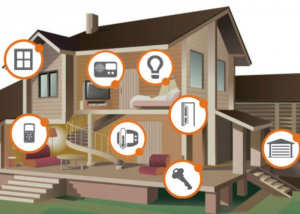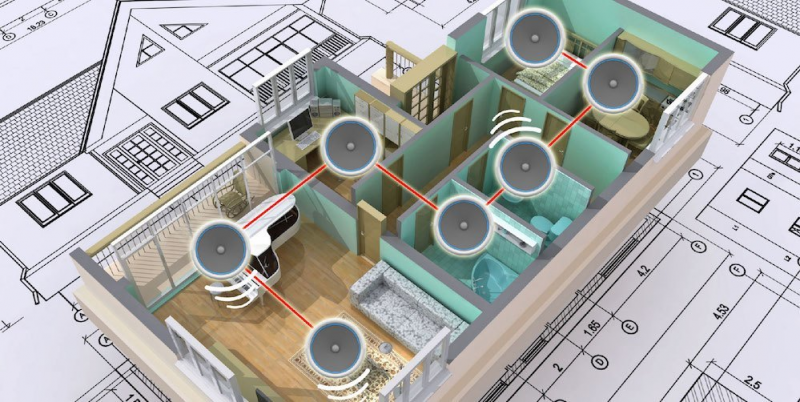Most modern homes would be incomplete without our dear gadgets. Today, the addition of a home network is also a new necessity. This has enabled the newer versions of the common gadgets of the past to talk to each other, thus enabling a host of new functionalities. Let us take a look at the two main advantages of a home network – home automation and entire home audio.
 Home automation
Home automation
Home automation can be achieved on a very simple level by simple smartphone controlled single switches, but any decent multi-room home automation relies on a wired or wireless home network. This allows all the different components to talk to each other, most commonly via a central home automation hub. Other components which can be incorporated in home automation systems are switches, dimmers and electro-mechanical actuators. Besides, some new smart appliances such as refrigerators and washing machines can also be connected to a home automation system. All these devices are connected to the hub, which can be controlled by an app on your smartphone. Thus, you can control all the connected switches or dimmers to control the lights or fans in the system. You can also open or close windows, shades or curtains using electro-mechanical actuators. It is also possible to automate these functions depending on certain programmable conditions or timers. Thus, you can have your chores reduced significantly as the lights and windows can be operated at the right timings without manual intervention.
Entire home audio
Another advantage of a home network is entire home audio. It is not uncommon for families to have different taste of music for each member. Having everyone’s music separately for everyone is possible, but there will be many redundant files for common music. Besides, each one will need to have a storage device with enough space. A more elegant solution is to have centralised storage of music combined with a whole home audio setup. Such a setup uses network connected smaller music systems which play selected audio directly from a network attached storage (NAS) device which provides central storage location. This also allows playback on mobile devices and computers. Thus, all members of the family can have their own music in their rooms from a central location instead of having storage devices for each of the members.

